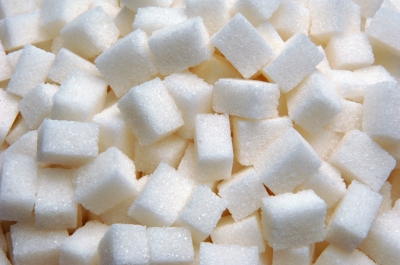Physical Activity Benefits – Why should you be active?
Okay, in the previous two posts, we’ve covered how much physical activity is needed and I mentioned different intensities requiring different time commitments.
A simple measure of your workout intensity is the talk test. If you can carry on a conversation while taking a breath every 3-4 words, you’re probably at a moderate intensity level. If you are working out hard enough that you can only say a few words and in order to say more you have to stop to catch your breath, you’ve most likely hit a vigorous activity level.
What physical activity benefits can you expect to see by being more active this year? Here are a few:
- Improved fitness and bone health.
- Decreased coronary heart disease, stroke, high blood pressure, type 2 diabetes, and colon and breast cancer.
- Less depression.
- Fewer falls and better cognitive ability for older adults.
- Better pain management, function, and quality of life if you suffer from arthritis.
All right, now don’t just read this without taking action. Look at the upcoming week. Where can you add a walk or extra trip to the gym to boost your activity level closer to the desired 2 ½ hours per week?
There are 1440 minutes each day. Only 30 of them need to be active!
February is American Heart Month. In recognition of American Heart Month you can access Heart Health Made Easy at a 25% savings. Learn more about this take action guide to lower cholesterol and blood pressure at http://www.hearthealthmadeeasy.com.
All the best,
Lisa Nelson RD
Healthy Ways to Lower Blood Pressure – Hibiscus Tea and the Link with High Blood Pressure
If you are prehypertensive or have mild high blood pressure a study has found that drinking hibiscus tea may help lower your blood pressure. A study followed 65 individuals aged 30-70 years-old with initial blood pressure readings of 120-150/<95. Individuals were split into two groups, with one group drinking three cups of hibiscus tea daily. Those consuming the tea saw a 6.2 mmHg drop in systolic blood pressure (top number).
Hibiscus is a common ingredient in herbal teas, providing a fruity, tart taste and red color. Hibiscus is also a good source of anthocyanins, flavones, flavonols, and phenolic acids. This isn’t the first study to show a link between hibiscus tea and reduced blood pressure.
February is American Heart Month. In recognition of American Heart Month you can access Heart Health Made Easy at a 25% savings. Learn more about this take action guide to lower cholesterol and blood pressure at http://www.hearthealthmadeeasy.com.
All the best,
Lisa Nelson RD
7 Natural Ways to Lower Blood Pressure
Cholesterol in Egg – Are eggs "good" or "bad" for cholesterol?

To lower cholesterol, it’s frequently recommended to limit egg intake, specifically the egg yolk. Egg yolks are a concentrated source of cholesterol, while egg whites contain primarily protein. However, while dietary cholesterol can impact cholesterol levels within the body, saturated fat actually has a greater impact on LDL cholesterol levels.
A 1999 study found little impact of consuming one egg daily on blood cholesterol levels. It’s currently recommended, for individuals with normal cholesterol levels, to limit dietary cholesterol intake to 300 mg or less daily. Cholesterol in egg – One egg contains 210 mg of cholesterol within the egg yolk. If you have high LDL cholesterol, the current recommendations are to limit dietary cholesterol to 200 mg or less per day.
If you enjoy eggs, there are alternatives, such as replacing the egg yolks with more egg whites or using products, such as Egg Beaters, which provide an excellent source of protein minus the cholesterol.
All the best,
Lisa Nelson RD
How to Lower Cholesterol in 8 Simple Steps
Weight Loss – Are low carb diets affecting your brain function?
Some studies are being conducted evaluating the effects of low carb diets, such as the Atkins diet, on cognitive ability. Brain function on a low carb diet may be impaired because glucose is the nutrient used by the brain for energy and the brain is not capable of storing glucose, but is depended on the bodies production of this nutrient.
Many low carb diets restrict intake to as little as 20 grams per day, while the RDA for carbs is at least 130 grams (taking into account the brains energy needs).
One study compared long and short term memory, spatial memory, and visual attention of women prior to beginning a low carb diet, post low carb diet, and after reintroduction of carbs. Those following a low carb diet had a gradual decline in memory performance and slower reaction time on all tests. Interestingly, attention span was improved on the low carb diet.
Fortunately, memory skills and scores returned to normal after carbohydrates were reintroduced.
All the best,
Lisa Nelson RD
Be Heart Healthy and Lose Weight
Weight Loss – Have you tried Stevia, the new zero-calorie sweetener?

Stevia has been approved by the FDA (U.S. Food and Drug Administration) as “generally recognized as safe”, meaning it can be marketed as a dietary supplement and added to food and drink products.
Stevia is using the label “natural” since it’s derived from the leaf of the stevia plant. This may be hard to accept due to the “bad rap” many artificial sweeteners have. Currently there are 5 artificial sweeteners approved by the FDA – aspartame (Nutrasweet, Equal), saccharin (Sweet’N Low), acesulfame-K (Sunett, Sweet One), neotame (made by NutraSweet), and sucralose (Splenda). Even though these sweeteners have received FDA approval, many question the safety and research studies are ongoing.
On the plus side for Stevia, it actually comes from a plant versus a lab. Stevia is a highly refined part of the plant called rebiana or Reb-A. This is the sweetest, purest part of the plant. A company out of Malaysia, PureCircle, claims to be the world’s largest supplier of Reb-A and has worked with a Swiss company to make the bitter, licorice flavor more palatable.
Regardless, we’ll soon be presented with many products containing Stevia in the near future. PepsiCo and Coca-Cola are launching new lines of stevia sweetened products along with producers of other food products, including baked goods and breakfast cereals.
All the best,
Lisa Nelson RD
How to Lower Cholesterol in 8 Simple Steps
Image courtesy of Suat Eman at FreeDigitalPhotos.net
2009 Essential Wellness Telesummit – Be Happy, Healthy, and Wealthy
Liz Copeland has brought together leading international experts and authors in the fields of health, happiness, and life enrichment to bring you the 2009 Wellness Telesummit! Join us to learn about essential wellness!
Join Liz and three other experts for a FREE 4-day Telesummit to guide you to:
- forgiving the unforgiveable to gain perfect freedom
- shedding the inner and outer clutter – so you can have love, health and financial abundance
- be heart healthy and live long
- overcoming the number one diet-sabotage habit so you can be the shape of your dreams
The Telesummit begins Monday, April 20, 2009.
All the best,
Lisa Nelson RD
Be Heart Healthy and Lose Weight



